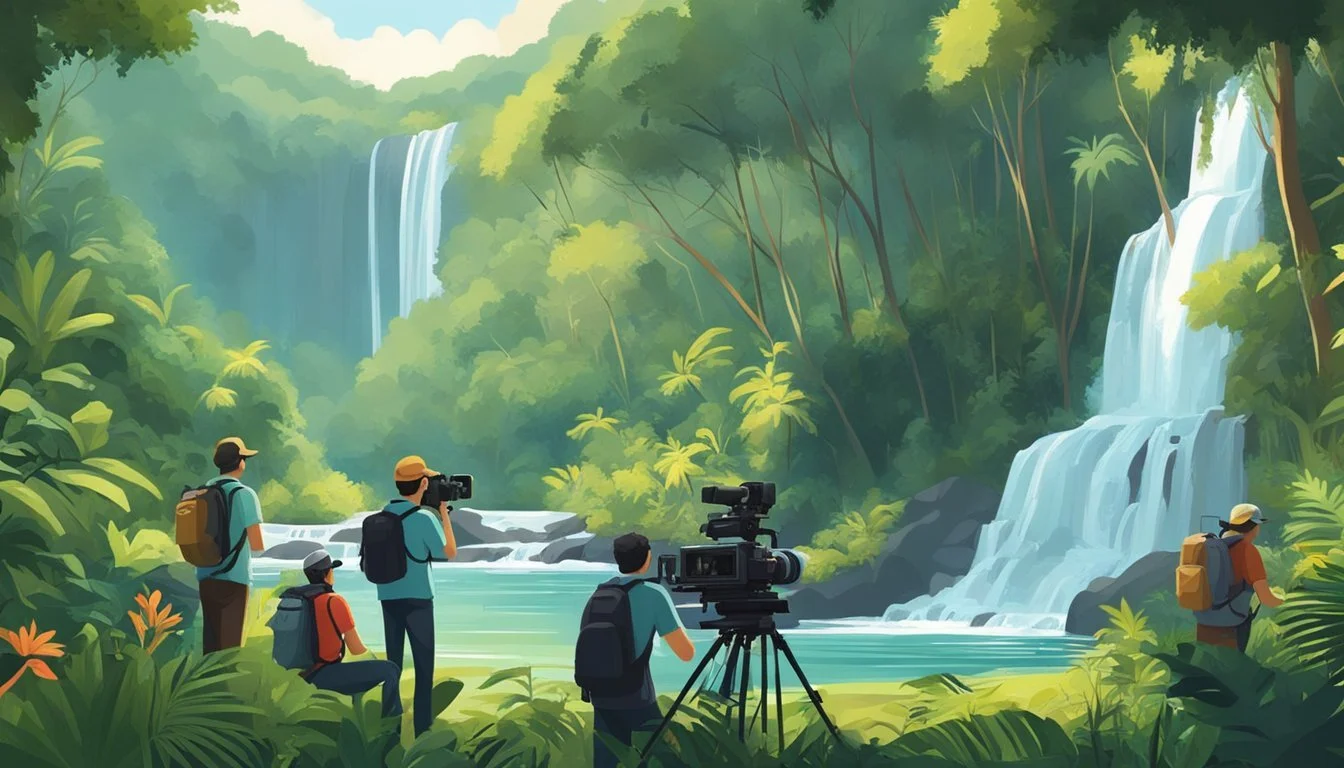Uncover the Truth: How Documentaries Are Rewriting Reality in 2025!
Documentaries are films or programs that present factual information about a subject. They aim to educate, inform, and often inspire viewers through real-life stories, events, or phenomena. A documentary is defined as a non-fictional work that uses actual footage, interviews, and historical records to explore its topic.
These productions can cover a wide range of subjects, from nature and science to social issues and historical events. Documentaries often employ various techniques to engage audiences, including narration, reenactments, and expert interviews. They serve as powerful tools for raising awareness, sparking discussions, and sometimes even influencing social change.
The format of documentaries has evolved over time, adapting to new technologies and audience preferences. Today, they can be found on television, streaming platforms, and in cinemas, offering diverse perspectives on the world around us. Documentaries continue to play a crucial role in shaping public understanding and discourse on important topics.
Evolution of the Documentary
Documentary films have undergone significant transformations since their inception. The genre has evolved in both form and function, adapting to technological advancements and changing societal needs.
Origins and Early History
The roots of documentary filmmaking can be traced back to the late 19th century. Early pioneers like the Lumière brothers captured real-life scenes on film, laying the groundwork for non-fiction cinema.
In the 1920s, Robert Flaherty's "Nanook of the North" marked a turning point. This groundbreaking work blended authentic footage with staged scenes, establishing new conventions for factual storytelling.
John Grierson coined the term "documentary" in the 1930s. He defined it as the "creative treatment of actuality," emphasizing the artistic potential of non-fiction film.
Development of Documentary Forms
As technology progressed, documentary forms diversified. The 1960s saw the rise of cinéma vérité, which aimed to capture unscripted reality with handheld cameras and minimal intervention.
Expository documentaries, featuring authoritative voiceovers, became popular for educational and propaganda purposes. This style dominated television documentaries for decades.
The 1980s and 1990s brought more personal, reflexive approaches. Filmmakers like Errol Morris blurred the lines between fiction and non-fiction, incorporating reenactments and stylized visuals.
Modern documentaries embrace a wide range of techniques. They often combine archival footage, interviews, and animation to create compelling narratives about complex subjects.
Documentary Genres and Types
Documentaries encompass a diverse range of storytelling approaches and subject matter. They provide viewers with unique insights into real-world events, people, and phenomena through non-fiction filmmaking techniques.
Biographical Documentaries
Biographical documentaries focus on the life and experiences of specific individuals. These films often chronicle the subject's achievements, challenges, and impact on society. Filmmakers may use archival footage, interviews, and reenactments to craft a compelling narrative.
Biographical documentaries can explore the lives of historical figures, contemporary personalities, or lesser-known individuals with remarkable stories. They offer viewers an intimate look at the subject's personal journey, motivations, and legacy.
Factual and Objective Art
Factual documentaries aim to present information and events as objectively as possible. These films prioritize accuracy and often rely on expert interviews, data, and scientific evidence to support their claims.
Objective art in documentaries refers to the filmmaker's approach to presenting information without overt bias. This style emphasizes balanced representation of different viewpoints and allows viewers to form their own opinions.
Factual documentaries cover a wide range of topics, from historical events to scientific discoveries. They serve as valuable educational resources and can inspire critical thinking about complex issues.
Production Elements
Documentaries rely on key production elements to convey their messages effectively. These components work together to create a compelling narrative and engage viewers.
Narration Techniques
Documentary filmmakers employ various narration techniques to guide the audience through the story. Voice-over narration is a common approach, where a narrator provides context and explanations off-screen. Some documentaries use on-screen text or captions to present information. Others opt for a more immersive style, letting the footage and interviews speak for themselves without explicit narration.
Narration can be objective or subjective, depending on the filmmaker's intent. It may present facts, pose questions, or offer interpretations of events. The choice of narrator also impacts the tone and credibility of the documentary.
Interviews and Contributions
Interviews form a crucial part of many documentaries, offering firsthand accounts and expert opinions. Documentary filmmakers carefully select interviewees to provide diverse perspectives on the subject matter. These contributions can include eyewitnesses, experts, and individuals directly involved in the events or issues being explored.
Filmmakers use different interview styles to elicit information. Some opt for formal, sit-down interviews, while others prefer more casual, on-location conversations. The framing and setting of interviews can influence how viewers perceive the information presented.
Archival footage, photographs, and documents often supplement interviews, providing visual evidence to support claims made by interviewees or the narrator. These elements help authenticate the documentary's narrative and enhance its credibility.
Platforms and Distribution
Documentary distribution has evolved significantly with the rise of digital platforms. Filmmakers now have diverse options to share their work with audiences worldwide
Documentaries in Society
Documentaries shape public discourse and serve as powerful educational tools. They illuminate real-world issues and historical events through compelling storytelling and factual presentation.
Influence on Public Opinion and News
Documentaries wield significant influence over public opinion. They often tackle complex social, political, and environmental topics, presenting them in accessible formats. This allows viewers to engage with important issues they might otherwise overlook.
Many documentaries provide in-depth coverage of current events, complementing and sometimes challenging traditional news sources. They offer documentary proof of events, giving audiences a more comprehensive understanding of news stories.
Some films spark widespread discussions and even policy changes. For example, environmental documentaries have raised awareness about climate change, influencing public attitudes and government actions.
Educational Use and Impact
Schools and universities frequently use documentaries as teaching aids. These films bring subjects to life, offering visual and emotional connections to topics that might seem dry in textbooks.
Documentaries provide documentary accounts of historical events, allowing students to witness firsthand testimonies and archival footage. This immersive approach enhances understanding and retention of information.
Many educational institutions create viewing guides and discussion materials to accompany documentaries. These resources help students critically analyze the content and its presentation.
Documentaries exploring documentary life expose viewers to diverse cultures and experiences. This fosters empathy and broadens perspectives, contributing to a more globally aware society.
The Art of Storytelling
Documentary storytelling blends factual content with creative narrative techniques. It aims to engage viewers while presenting real-world events and issues.
Narration plays a crucial role in guiding the audience through the story. A skilled narrator can provide context, explain complex concepts, and evoke emotions.
Visual elements are equally important in documentary storytelling. Filmmakers use carefully selected footage, interviews, and archival materials to create a compelling narrative.
Pacing is key in maintaining viewer interest. Documentaries often alternate between intense moments and quieter reflections to keep the audience engaged.
Character development is essential, even in non-fiction. Documentaries often focus on individuals whose experiences illuminate broader themes or issues.
Sound design enhances the storytelling experience. Music, ambient noise, and carefully chosen audio clips can create atmosphere and emotional resonance.
Editing is a powerful tool in shaping the narrative. Skilled editors can juxtapose different elements to create meaning and guide the viewer's understanding.
Ethical considerations are paramount in documentary storytelling. Filmmakers must balance the need for an engaging story with a commitment to accuracy and fairness.
Challenges and Criticisms
Documentary filmmaking faces several challenges and criticisms that impact its production and reception. Funding often poses a significant hurdle, as documentaries typically have limited commercial appeal compared to fictional films.
Ethical considerations arise when portraying real people and events. Filmmakers must balance truthful representation with respect for subjects' privacy and consent. This can lead to difficult decisions about what to include or omit.
Objectivity remains a contentious issue in documentary production. Critics argue that all films inherently contain bias through the choices made in filming, editing, and narration. Some question whether true objectivity is achievable.
Access to subjects and locations can be restricted, especially for sensitive topics. This may limit a documentary's ability to fully explore its subject matter or present multiple perspectives.
Technical challenges include capturing unscripted moments and working with unpredictable conditions. Filmmakers must adapt quickly to changing circumstances while maintaining production quality.
Critics also point out the potential for manipulation of footage or facts to support a particular narrative. This raises concerns about the reliability of documentaries as historical records or sources of information.
The rise of streaming platforms has changed documentary distribution, creating new opportunities but also increasing competition for audience attention. This shift impacts which stories get told and how they reach viewers.
Future of Documentary Filmmaking
Documentary filmmaking is poised for significant evolution in the digital era. New technologies are expanding creative possibilities and changing production methods.
Artificial intelligence may streamline editing processes by analyzing footage and identifying compelling shots. This could reduce time and effort in post-production.
Virtual and augmented reality offer immersive ways to tell stories. Viewers may soon be able to "step into" documentaries for more engaging experiences.
Social media platforms are influencing documentary styles. Shorter formats and more personal narratives are becoming popular, especially among younger audiences.
Crowdfunding and streaming services provide new avenues for funding and distribution. This allows for a wider range of voices and subjects in documentary films.
Drones and advanced camera technology enable stunning visuals previously difficult to capture. Filmmakers can now document remote locations and events with ease.
Interactive documentaries are emerging as a new form. These allow viewers to explore content non-linearly and engage with the material on a deeper level.
Ethical considerations around privacy and consent are becoming more complex. Filmmakers must navigate these issues carefully as technology advances.
The line between documentary and drama may blur further. Hybrid forms combining elements of both genres could become more prevalent in future productions.




